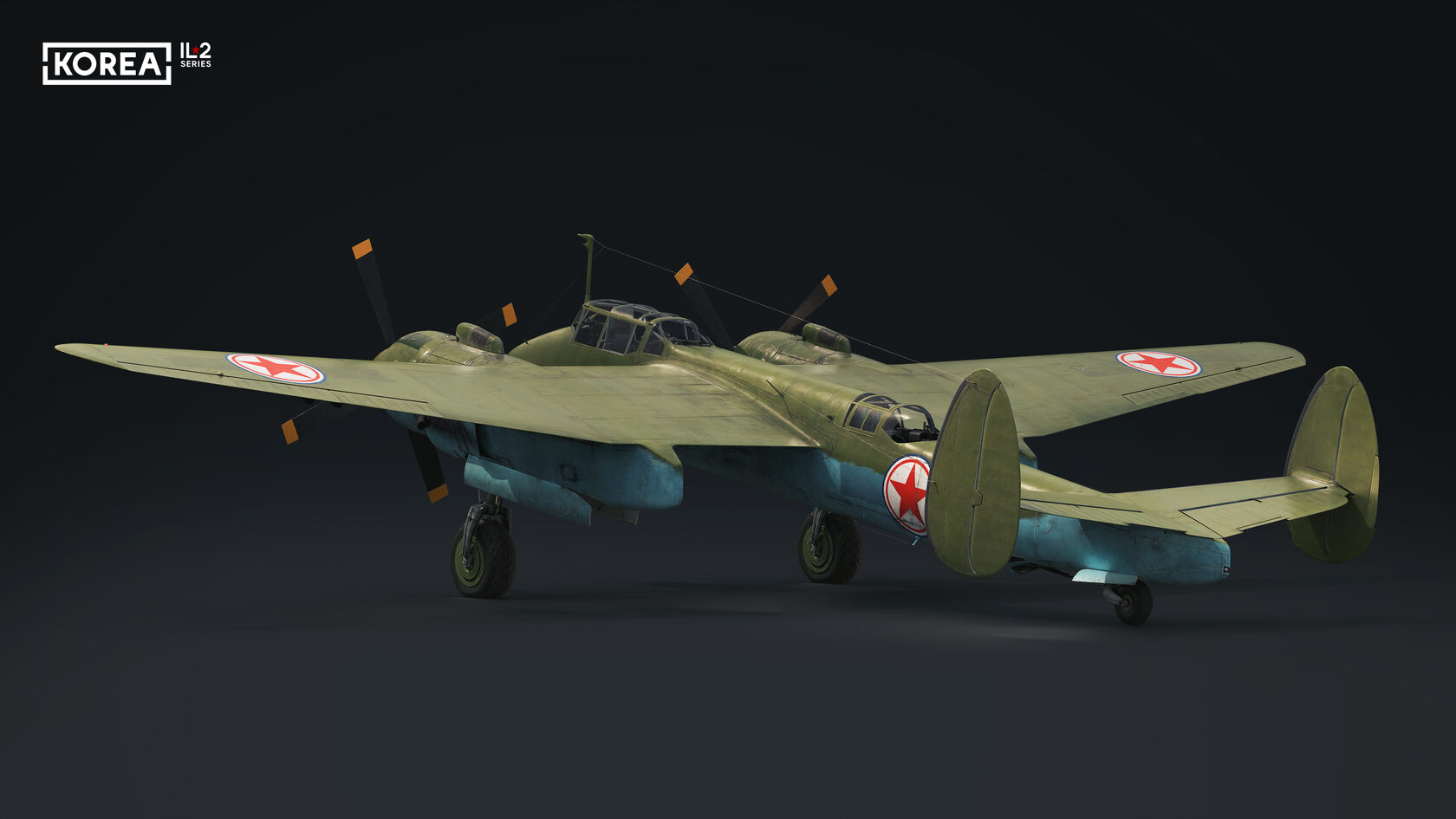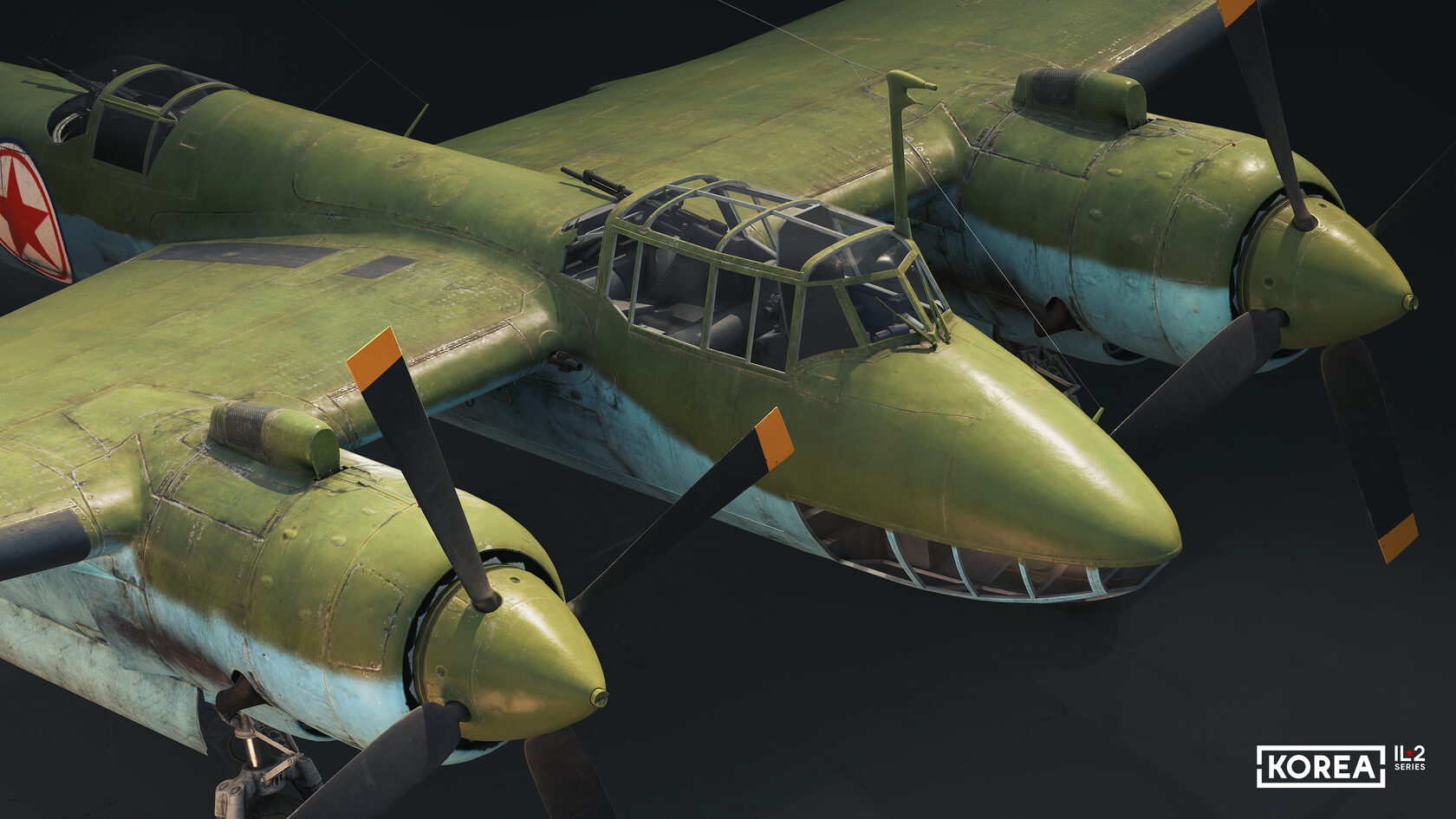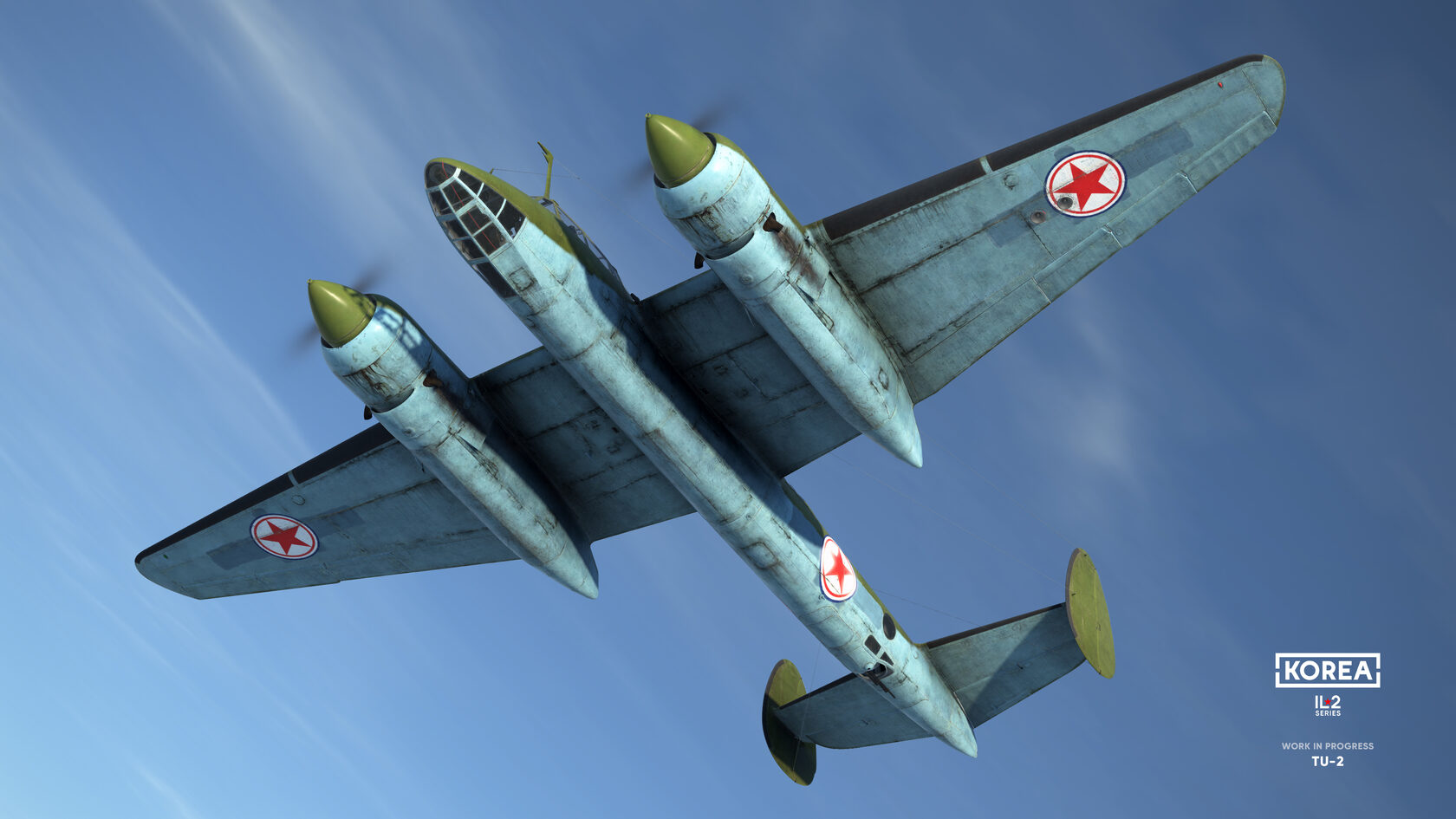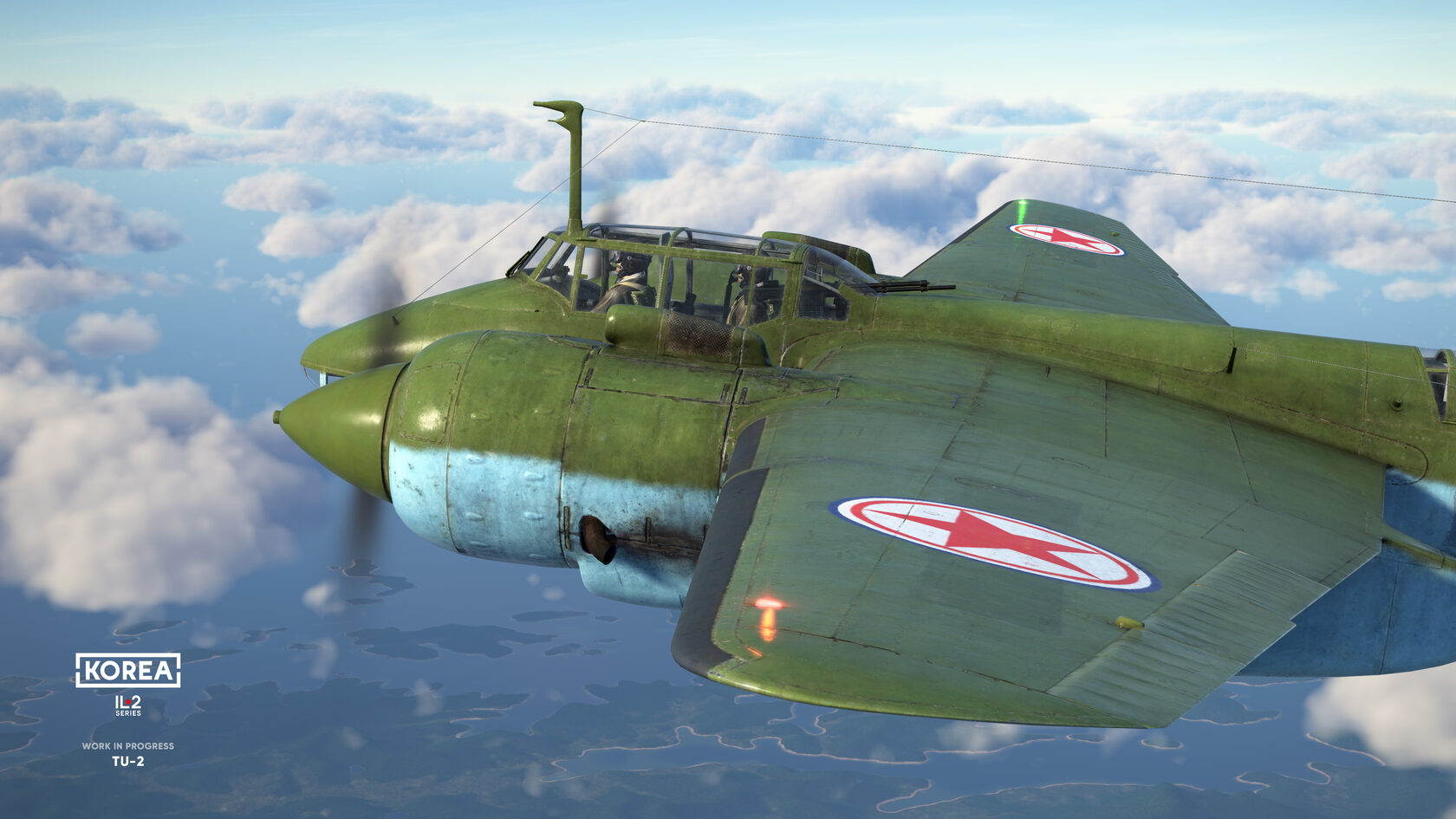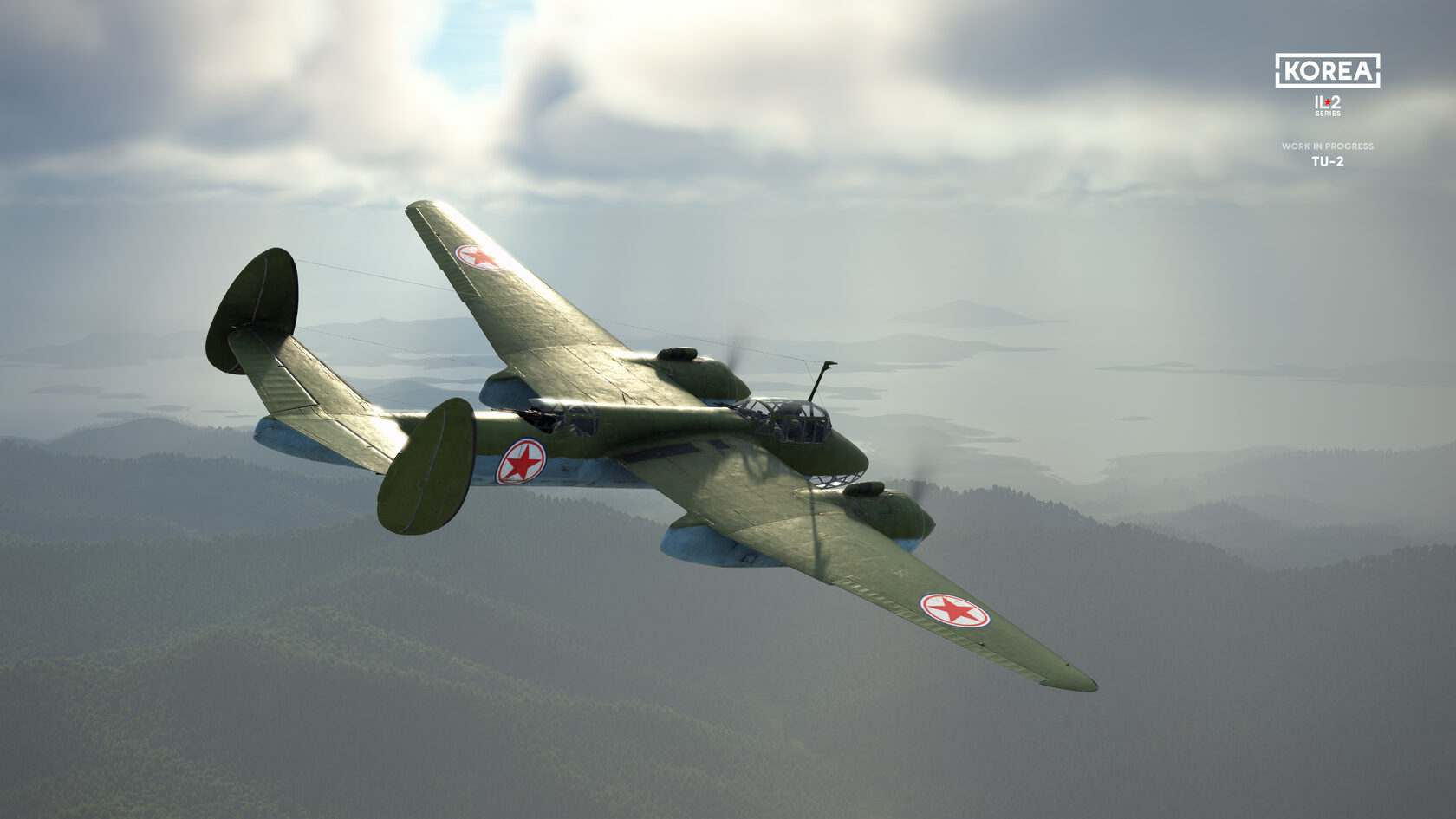Dev Blog #15
Hello everyone!
Continuing the story of Soviet aviation in the Korean War, today we’ll talk about another aircraft that came from World War II to this major conflict of the 1950s — the Tu-2 bomber.
Developed in the Soviet Union by the Tupolev Design Bureau as a high-speed bomber, it was powered by two promising M-82 engines (later used in the La-5 fighter). It entered service in 1942 and its design underwent many changes until the end of the war. After the war, a significant number of Tu-2s of post-war design and modifications were delivered from the USSR to the People’s Republic of China: these aircraft, in the official status of volunteer forces and with applied identification marks of the North Korean Air Force, but in the structure of the Chinese Air Force and under the control of Chinese pilots, bombed the Western coalition in the Korean War.
Continuing the story of Soviet aviation in the Korean War, today we’ll talk about another aircraft that came from World War II to this major conflict of the 1950s — the Tu-2 bomber.
Developed in the Soviet Union by the Tupolev Design Bureau as a high-speed bomber, it was powered by two promising M-82 engines (later used in the La-5 fighter). It entered service in 1942 and its design underwent many changes until the end of the war. After the war, a significant number of Tu-2s of post-war design and modifications were delivered from the USSR to the People’s Republic of China: these aircraft, in the official status of volunteer forces and with applied identification marks of the North Korean Air Force, but in the structure of the Chinese Air Force and under the control of Chinese pilots, bombed the Western coalition in the Korean War.
The bomber, in the modification used during the Korean War and recreated in our simulator, was equipped with two ASh-82FN engines with 3.6 meter diameter AV-9VF-21K four-blade propellers. This gave the aircraft a horizontal speed of up to 555 km/h and a ceiling of up to 9000 meters. All metal except for the nose fairing and rudder fairing, it was originally designed as a dive bomber — the authorized speed in a dive was 650 km/h. In later series, the air brakes were removed. It carried 1000 kg of bombs in normal configuration but could carry up to 4000 kg in overload configuration. The bomb bay could hold 9 FAB-100 bombs, or 4 FAB-250, or 2 FAB-500, or one FAB-1000. Under each wing, it could carry up to 2 FAB-250, or 2 FAB-500, or one FAB-1000, or one FAB-2000. In addition to the bomb armament, the aircraft in later modifications had two 20 mm ShVAK cannons mounted in the wing root. The defensive armament included 3 gun turrets (two above and one below) equipped with 12.7 mm UBT machine guns.
Among the interesting features of the equipment of later modifications worth mentioning are engine intake dust filters and inflatable deicing boots on the wing and the tail section. The sights were the simplest and consisted of a PBP-1 pilot’s sight and an OPB-1D bomb sight. The fuel system consisted of 14 tanks with a total fuel reserve of up to 2700 liters, enough for a flight of up to 2250 km. The crew consisted of 4 persons: pilot, navigator-gunner behind the pilot, gunner-radio operator, co-pilot. Night flights were possible — there were formation lights, landing lights, instrument lighting, and an artificial horizon. The radio equipment included a long-range communication radio, a command radio, an identification transponder, a radio compass, a marker receiver, a radio altimeter, and an intercom.
In the game, the Tu-2, like the B-29, is recreated in two FM versions — one with a detailed, complex physical model for scenarios involving a small number of AI bombers, and another with a simplified physical model for mass raids.



